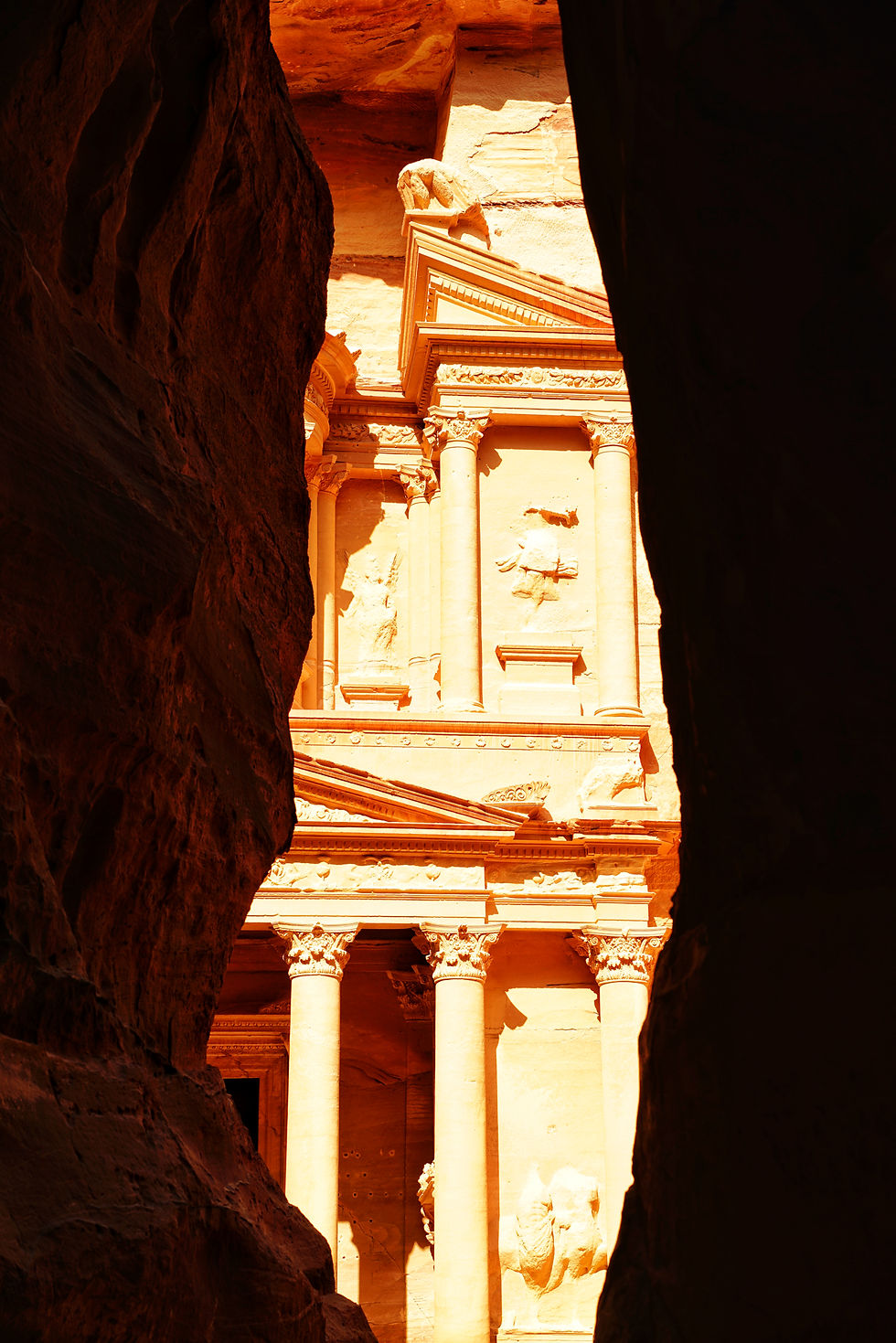
Al Khazneh - The Treasury
Petra, Jordan
Cultural Treasure
Carved out of a sandstone cliff face, the towering façade known as the Treasury stands as the most iconic structure in the ancient city of Petra, and perhaps the whole Middle East. Believed to be constructed in the first century A.D. for a royal tomb of King Aretes IV of the Nabateans, its intended use has somewhat changed over the centuries. Legends beginning in the 18th cetury granted its name as there was believed to be great wealth hidden within. Its name stems not from housing treasures inside the chambers though, but from legends around an urn perched high in a carved niche.
Bedouin tribes attempted to access the urn by firing rifles at it, as evidenced by bullet holes marking the urn's surface. Later stories tell of Bedouins poisoning the water supply that fed into the urn, hoping to kill the evil spirits said to guard the riches. Though no treasures were uncovered, these attempts left their mark on the Treasury and contributed to the air of mystery enveloping Petra’s most famous façade. The legends endure as symbols of human yearning for wealth. The Treasury still stands proud, a true masterpiece of human craftsmanship.
EXPLORE THE LOCATION
Use the interactive map to also discover nearby treasures.
QUICK FACTS

Location:
In the southern part of Jordan towards the entrance to the city of Petra. The treasury is the first sight after traversing through the sig, a narrow slot canyon.
Period:
It is believed to be built in the 1st Century A.D. as a mausoleum for the Nabatean King Aretes IV.
Purpose:
A burial place for a Nabatean King most likely, although today nothing exists in the three chambers inside anymore.
Now:
The most popular sight in Jordan and one of the most famous monuments in the world. As a result, thousands of people hoard the area every day to witness the beauty in stone.
SNAPSHOTS OF THE TREASURE










